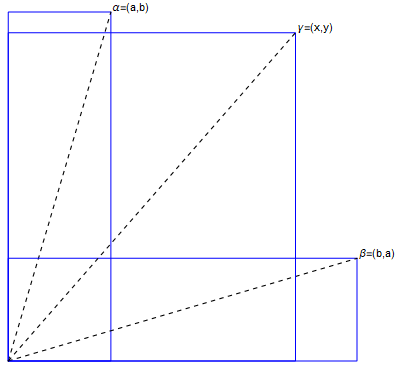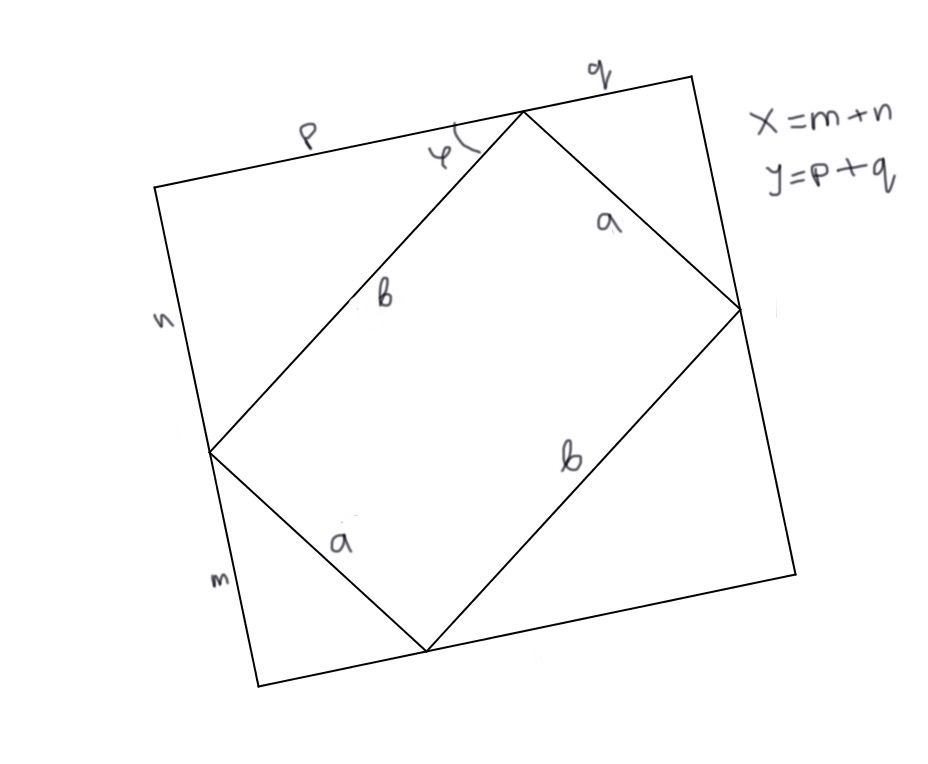When does an $a\times b$ rectangle fit inside an $x\times y$ rectangle? I have an algebraic condition which I can diagram geometrically, and I'd like a good geometric argument.
Assume $0<a<b$, $0<x<y$. Then the one rectangle fits in the other iff $a\le x$ and either: $$b\le y$$ or: $$(b^2-a^2)^2 \le (ax-by)^2+(ay-bx)^2$$ which I found algebraically, with help from Mathematica. One possible diagram is
and then the last condition is equivalent to $$ |\boldsymbol{\alpha \times \beta}|^2 \le |\boldsymbol{\alpha \times \gamma}|^2 + |\boldsymbol{\beta \times \gamma}|^2 $$ This can also be interpreted in terms of the lengths of these three vectors and the sines of the angles between them.
Is there a nice geometric argument from this diagram to fitting the one rectangle inside the other?


